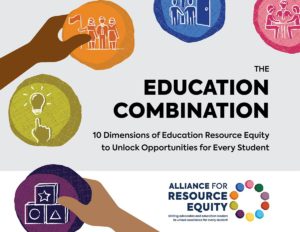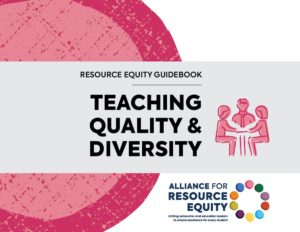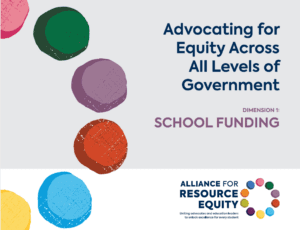The Vision
Each student—including students with higher needs and students of color—has access to high-quality and culturally relevant curriculum, materials, coursework, and class offerings to meet their needs, so all students can reach high standards and thrive.
Sample Questions to Ask
- Do all schools – and all classrooms within schools – consistently use materials that are aligned with grade-level standards?
- To what extent are curriculum and materials culturally relevant and reflective of the diversity of our student population?
- How do the rates of enrollment in advanced courses differ across student groups and/or across schools?
- How does the breadth and quality of arts and other enrichment course offerings differ across schools in our district?
See our DIY District Diagnostic for more examples and recommendations about the types of data to look at.
Take Action With Our Diagnostic Tools
- Use our Resource Equity Diagnostic: Self-Assessment tool to start conversations and build shared understanding across teams.
- Then, analyze your data to better understand the state of resource equity in your district. First, use our Diagnostic Blueprints to learn about what types of analyses to conduct. Then, input your district data into our DIY Analysis Tools to complete these analyses and make meaning of the results.
- Prioritize areas for further inquiry and identify potential root causes and actions using our District Guidebook.
Common Causes of Inequity
- Insufficient Staff Capacity and Supports: A lack of support or expertise around how to apply high-quality culturally relevant curriculum, and potential implicit and/or explicit bias can hinder teachers’ consistent use of empowering, rigorous materials.
- Limited Course Pathways: Starting in early grades, a district’s course pathways can be developed in a way that makes it difficult for students to take and succeed in all the courses they need, when they need them (including advanced courses and their prerequisites).
- Rigid School Scheduling Practices: Because of rigid scheduling practices, students may not have sufficient time to engage in the arts and enrichment courses.
Related Dimensions
No single dimension of education resource equity can unlock every student’s potential—but when dimensions are combined to meet students’ distinct needs, they are a strong foundation for unlocking better, more equitable experiences in school.
Explore the Instructional Time & Attention dimension, as this impacts the amount of access that students have to high-quality content and materials, as well as their enrollment in college-and-career-aligned courses, arts, and enrichment.
Toolkit
Use our Resource Equity Toolkit to learn more, start a conversation, and take action in your community.

The Education Combination
Learn about education resource equity by discovering 10 dimensions that unlock better, more equitable experiences in school for all students.

Diagnostic Tools And Supports
Identify strengths and gaps in your school system across all 10 dimensions.

Guidebooks
Explore underlying causes of your school system’s challenges and possible actions to improve students’ experiences in school.

Advocating Across Government
Identify who has the power to address equity gaps in your school system and the school district, state and federal levels.

Casemaking Decks
Develop compelling and coherent messaging to “make the case” for addressing resource inequities in your community.
